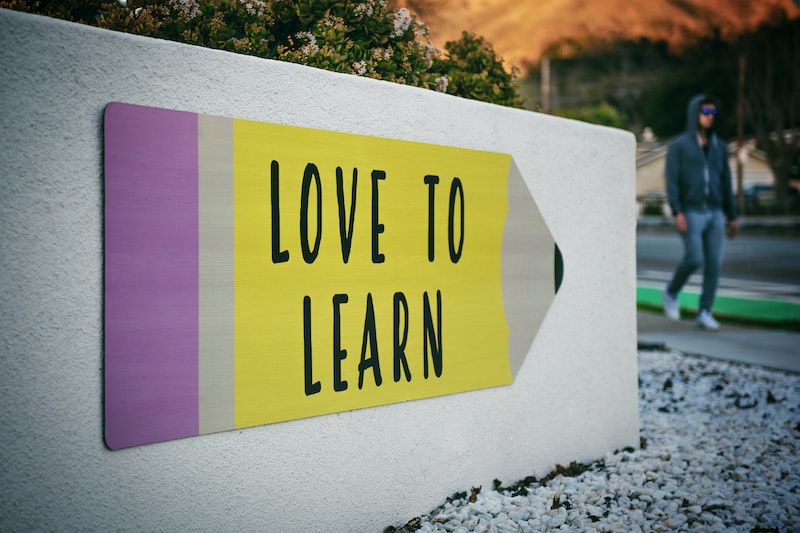Are you ready to dive into the fascinating world of digital literacy in education? Buckle up and let’s embark on a journey through the Information Age! In today’s fast-paced and hyper-connected society, being digitally literate is no longer a luxury but a necessity. So, what exactly is digital literacy, and why is it crucial for students?
Digital literacy refers to the ability to find, evaluate, and use information effectively and ethically in a digital environment. It goes beyond simply knowing how to use computers or navigate the internet; it encompasses critical thinking, problem-solving skills, and the ability to discern reliable sources from misinformation. In essence, it empowers students to become active participants in the digital realm rather than passive consumers.
In the context of education, digital literacy plays a pivotal role in equipping students with the skills they need to thrive in the 21st century. As technology continues to reshape various aspects of our lives, students must be prepared to adapt and harness its power for their benefit. Digital literacy enables them to access a vast pool of knowledge, collaborate with peers, and express their creativity in ways that were unimaginable in the past.
Moreover, digital literacy enhances students’ ability to think critically and solve complex problems. With the overwhelming amount of information available online, learners need to develop strong evaluation skills to determine the credibility and relevance of sources. They must learn how to distinguish between reliable data and biased opinions, fostering a healthy skepticism that encourages further investigation.
Imagine digital literacy as a compass guiding students through the vast sea of information, helping them navigate the turbulent waters of the Information Age. It equips them with the necessary tools to search, analyze, and synthesize information effectively, ensuring they stay afloat amidst the waves of data overload.
In conclusion, digital literacy is an essential skill for students in today’s ever-evolving digital landscape. By mastering digital literacy, students become active participants in the Information Age, equipped with the ability to access knowledge, think critically, and solve complex problems. So, let’s embrace the opportunities of the digital world and equip ourselves with the skills needed to thrive in this exciting era!
Developing Digital Skills for Educational Success
Are you ready to embark on a journey that will unlock the doors to educational success? In today’s digital age, developing digital skills is crucial for students. But what exactly are digital skills, and why are they so important? Let’s dive into the world of digital literacy and discover how it can pave the way to academic excellence.
Digital skills encompass a range of abilities that enable individuals to navigate and thrive in the digital landscape. From basic computer literacy to advanced coding and data analysis, these skills empower students to harness the power of technology for learning and personal growth. Imagine having the ability to find information at your fingertips, collaborate with peers across the globe, and present your ideas in creative ways. These are just a few examples of how digital skills can revolutionize education.
So, how do digital skills contribute to educational success? For starters, they enhance students’ ability to access and evaluate information effectively. With the vast amount of resources available online, being able to discern reliable sources from misinformation is essential. By mastering digital research techniques, students can become critical thinkers and make informed decisions based on evidence.
Furthermore, digital skills foster creativity and innovation. Today’s digital tools provide endless possibilities for expressing ideas and solving problems. Whether it’s designing a multimedia presentation, creating a website, or programming a robot, students can unleash their imagination and turn concepts into reality. These hands-on experiences not only engage learners but also develop their problem-solving and communication skills, which are vital in the modern workforce.
Additionally, digital skills promote collaboration and global connectivity. Through online platforms and communication tools, students can connect with peers from diverse backgrounds and work together on projects regardless of physical distance. This exposure to different perspectives cultivates empathy, cultural awareness, and teamwork abilities, preparing students for an interconnected world.
In conclusion, developing digital skills opens up a world of opportunities for educational success. It equips students with the tools they need to navigate the digital realm, access information, think critically, and collaborate effectively. By embracing digital literacy, students can unlock their full potential, become lifelong learners, and thrive in the ever-evolving landscape of education. So, are you ready to embark on this transformative journey? The future awaits!
Enhancing Critical Thinking and Media Literacy
In a world driven by information overload, the ability to think critically and navigate through the vast sea of media is becoming increasingly vital. Enhancing critical thinking skills and media literacy has become essential to make informed decisions, avoid misinformation, and comprehend complex issues in our society. So, how can we sharpen these skills to become discerning consumers of information?
Firstly, let’s understand what critical thinking entails. It’s about questioning, analyzing, and evaluating information in a logical and objective manner. One effective way to enhance critical thinking is by exposing ourselves to diverse perspectives. Imagine gathering pieces of a puzzle from different sources that ultimately form a complete picture. By considering alternative viewpoints, we broaden our understanding and challenge our own biases.
Media literacy goes hand-in-hand with critical thinking. With the proliferation of fake news and manipulated content, it’s crucial to develop skills that enable us to distinguish fact from fiction. A metaphorical compass in this digital landscape, media literacy helps us navigate through biased narratives and unreliable sources. By asking questions like “Who created this content?” or “What might be their intentions?”, we become more adept at identifying trustworthy information.
Additionally, adopting an active approach towards media consumption can significantly enhance critical thinking and media literacy skills. Instead of passively accepting information, we should engage in fact-checking, cross-referencing sources, and verifying claims independently. This proactive stance empowers us to make well-informed judgments and reduces the risk of being swayed by false or misleading information.
Furthermore, fostering critical thinking and media literacy should start early in education. Schools play a pivotal role in equipping students with the necessary tools to navigate the information age. By integrating media literacy into curricula, educators can teach young minds how to evaluate sources, recognize bias, and critically analyze media messages. This prepares them to become responsible digital citizens who can actively participate in democratic processes.
In conclusion, enhancing critical thinking and media literacy is crucial for individuals to thrive in today’s information-driven society. By embracing diverse perspectives, developing media literacy skills, adopting an active approach, and integrating education, we can equip ourselves with the necessary tools to navigate the complex landscape of the digital era. Let us embark on this journey toward becoming discerning consumers of information, capable of making informed decisions and positively impacting our world.
Digital Citizenship and Online Safety in Education
In today’s digital age, cultivating digital citizenship and ensuring online safety have become paramount in the field of education. As students navigate the vast realm of the internet, it is crucial to equip them with the necessary knowledge and skills to responsibly engage in the virtual world. Digital citizenship encompasses a range of principles and practices that empower individuals to use technology in an ethical and safe manner.
One of the fundamental aspects of promoting digital citizenship is educating students about their rights and responsibilities when using digital tools and platforms. By fostering a culture of respect and empathy, educators can guide students to understand the importance of treating others with kindness and consideration, both online and offline. Encouraging open discussions on topics like cyberbullying, privacy, and plagiarism helps students develop critical thinking skills while nurturing a positive digital footprint.
Another key component of digital citizenship is teaching students to protect their personal information and practice online safety. With the proliferation of social media and digital communication channels, it is vital for learners to comprehend the potential risks associated with sharing sensitive data online. Educators should emphasize the significance of strong passwords, secure browsing habits, and discernment in accepting friend requests or engaging with unfamiliar individuals. By encouraging students to think before they click, we enable them to safeguard their identities and maintain control over their online presence.
Furthermore, fostering digital literacy skills plays a crucial role in preparing students for the challenges of the digital world. By integrating technology into the classroom, educators can enhance learning experiences and equip students with essential digital competencies. Teaching critical evaluation of online sources, promoting media literacy, and guiding students on responsible social media usage empowers them to navigate the vast sea of information effectively.
In conclusion, nurturing digital citizenship and prioritizing online safety in education is of utmost importance in today’s interconnected world. By instilling values of respect, empathy, and responsibility, educators can help students become responsible digital citizens. Equipping them with the necessary skills and knowledge to protect themselves and make informed choices online will not only empower students but also contribute to a safer and more inclusive digital environment for all.
Integrating Technology into the Classroom: Best Practices
Are you ready to revolutionize your classroom and enhance the learning experience for your students? Integrating technology into the classroom can be a game-changer, allowing educators to create dynamic and engaging lessons. In this article, we will explore the best practices for integrating technology and harnessing its full potential to benefit both teachers and students.
One of the key aspects of successful technology integration is selecting the right tools and resources. With a plethora of options available, it’s important to choose those that align with your teaching goals and cater to the specific needs of your students. Whether it’s interactive whiteboards, educational apps, or online collaboration platforms, each tool should serve a purpose and contribute to the overall learning objectives.
Another crucial aspect to consider is teacher training and professional development. To effectively integrate technology, educators must feel confident and comfortable using it. Training sessions, workshops, and ongoing support can empower teachers to explore new instructional methods, experiment with different technologies, and stay updated with the latest trends. When teachers are enthusiastic and knowledgeable about technology, it creates a positive ripple effect in the classroom, fostering an environment of curiosity and exploration.
Technology should never replace traditional teaching methods; instead, it should complement them. It’s essential to strike a balance between digital and analog activities to ensure a well-rounded education. For instance, a science lesson on ecosystems could involve using virtual simulations to explore different environments, followed by hands-on experiments in the school’s garden. By combining technology with real-world experiences, students gain a deeper understanding of the subject matter.
Collaboration is another area where technology shines. Online platforms and tools enable students to work together on projects, share ideas, and receive instant feedback. This fosters teamwork, communication, and critical thinking skills. Additionally, incorporating multimedia elements such as videos, podcasts, and presentations can captivate students’ attention and cater to diverse learning styles.
In conclusion, integrating technology into the classroom requires thoughtful planning and implementation. By selecting the right tools, providing adequate training to teachers, striking a balance between digital and analog activities, and promoting collaboration, educators can create an engaging and enriching learning environment. Embrace the power of technology and embark on a journey of transformation that will leave a lasting impact on your students’ educational experience.
Assessing Digital Literacy Skills and Competencies
Are you ready to navigate the digital landscape with confidence? In today’s interconnected world, digital literacy has become a crucial skill set that empowers individuals to thrive in various domains. From education and employment to personal development, being digitally literate opens doors to endless opportunities. But how can one assess their digital literacy skills and competencies? Let’s delve into the details.
Digital literacy encompasses a range of abilities that enable individuals to effectively use digital technologies for communication, information retrieval, critical thinking, and problem-solving. To assess your prowess in this area, consider evaluating the following key areas:
1. Technological Proficiency:
How comfortable are you with using different devices, software, and online platforms? Can you navigate seamlessly through various interfaces? Assessing your technological proficiency involves examining your familiarity with digital tools and your ability to adapt to new ones.
2. Information Management:
With a vast amount of information available online, the skill to find, evaluate, and utilize relevant data is vital. Ask yourself: Can you discern reliable sources from unreliable ones? Are you adept at organizing and analyzing information to derive meaningful insights?
3. Communication and Collaboration:
Digital literacy extends beyond individual skills; it also involves effective communication and collaboration in virtual environments. Consider your aptitude for communicating ideas clearly through various digital channels and collaborating with others using digital tools and platforms.
4. Digital Citizenship and Ethics:
As a responsible digital citizen, understanding ethical practices and staying safe online is crucial. Assess your knowledge of privacy, security, copyright, and responsible online behavior. Are you mindful of the potential risks and challenges that come with the digital realm?
5. Critical Thinking and Problem-Solving:
Digital literacy is closely intertwined with critical thinking and problem-solving abilities. Evaluate your capacity to analyze complex situations, think logically, and come up with innovative solutions using digital resources.
Remember, assessing your digital literacy skills is an ongoing process. As technology evolves rapidly, so should your abilities. Embrace continuous learning, explore new tools, and seek opportunities to enhance your digital literacy. By doing so, you’ll stay ahead in the digital age and unlock a world of possibilities.
So, are you ready to embark on this digital literacy journey? Equip yourself with the necessary skills and competencies, and let the digital realm become your playground.
Future Trends in Digital Literacy Education
Are you ready to dive into the exciting world of digital literacy education and explore the future trends that lie ahead? Well, buckle up, because we’re about to embark on a fascinating journey!
In this digital age, where technology is advancing at lightning speed, digital literacy has become a crucial skill for individuals of all ages. It empowers us to navigate the vast sea of information, communicate effectively, and adapt to the ever-evolving digital landscape. As we look ahead, several trends are shaping the future of digital literacy education.
Firstly, personalized learning is gaining traction as a powerful educational approach. Just as no two individuals are the same, their learning needs and preferences vary too. With the aid of technology, educators can now tailor educational content to suit each learner’s unique requirements, ensuring engagement and effective knowledge acquisition. Imagine a virtual tutor who understands your strengths and weaknesses and designs personalized learning paths just for you.

Another emerging trend is the integration of augmented reality (AR) and virtual reality (VR) in digital literacy education. These immersive technologies provide students with realistic, hands-on experiences that transcend traditional classroom boundaries. From exploring ancient civilizations to conducting virtual science experiments, AR and VR offer limitless possibilities for interactive and experiential learning.

Additionally, there is a growing emphasis on teaching critical thinking and media literacy. In an era of rampant misinformation and fake news, it is essential to equip learners with the skills to evaluate and analyze digital content critically. By fostering a healthy skepticism and providing tools to fact-check information, educators can empower students to be discerning consumers and creators of digital media.
The rise of coding and computational thinking is yet another prominent trend in digital literacy education. As technology continues to shape our world, understanding the language of computers is becoming increasingly important. Teaching students how to code not only develops logical reasoning and problem-solving skills but also opens up a world of opportunities in the digital realm.
Finally, collaboration and global connectivity are transforming the way we learn. Through online platforms and social media, students can connect with peers from across the globe, engage in collaborative projects, and gain a deeper understanding of different cultures and perspectives. This interconnectedness fosters a sense of global citizenship and prepares learners for the diverse and interconnected world they will inhabit.
So there you have it – a glimpse into the future of digital literacy education. From personalized learning to immersive technologies, critical thinking to coding, and global collaboration, these trends are reshaping the educational landscape. As we embrace these changes, we can empower individuals to thrive in the digital age and unlock their full potential.
Now that you’ve learned about the exciting trends in digital literacy education, get ready to embark on your own journey of digital discovery!












Leave a Reply